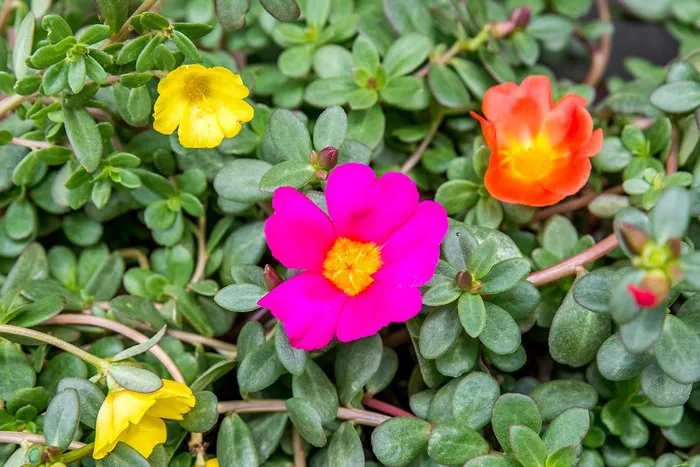Purslane, scientifically known as Portulaca oleracea, is a versatile and nutritious plant that has been consumed for centuries across various cultures. While the leaves and stems of purslane are commonly used in salads, stir-fries, and soups, there’s often curiosity about whether its vibrant flowers are also edible. In this article, we delve into the culinary potential of purslane flowers, exploring their taste, nutritional value, and culinary applications.
Understanding Purslane: A Nutritional Powerhouse
Before delving into the culinary aspects of purslane flowers, it’s essential to understand the nutritional profile of the entire plant. Purslane is often regarded as a weed in many regions but is celebrated for its exceptional nutritional value. This succulent plant is rich in essential nutrients, including vitamins A, C, and E, as well as minerals like magnesium, calcium, and potassium. Additionally, purslane is one of the richest plant sources of omega-3 fatty acids, making it a valuable addition to any diet.
The Edibility of Purslane Flowers: What You Need to Know
Purslane flowers are indeed edible, adding both visual appeal and flavor to dishes. These small, yellow flowers bloom atop the succulent stems of the plant and are characterized by their delicate texture and mild, slightly tangy flavor. When harvested at the right stage of maturity, purslane flowers can enhance a variety of culinary creations.
Culinary Uses of Purslane Flowers
Salads: One of the simplest ways to incorporate purslane flowers into your culinary repertoire is by adding them to salads. Their bright color and subtle flavor complement other salad ingredients, providing a visual and gustatory contrast. Simply pluck the flowers from the stems and sprinkle them over your favorite salad mix for a burst of freshness.
Garnishes: Purslane flowers make exquisite garnishes for a wide range of dishes, from appetizers to main courses. Their vibrant hue adds an elegant touch to plates, enhancing the overall presentation of the meal. Consider using purslane flowers to adorn dishes like seafood platters, vegetable medleys, or even desserts for a sophisticated finish.
Infusions: Another creative way to incorporate purslane flowers into your culinary creations is by infusing them into liquids. Whether you’re making infused oils, vinegars, or syrups, adding purslane flowers can impart a subtle floral essence to the final product. Experiment with different infusion techniques to discover unique flavor combinations that elevate your dishes.
Preserves: Preserving purslane flowers allows you to enjoy their culinary benefits long after the growing season has ended. Pickling purslane flowers in a brine solution or candying them with sugar are popular preservation methods that capture their flavor and extend their shelf life. These preserved flowers can then be used as condiments or toppings for various dishes.
Harvesting and Handling Purslane Flowers
When harvesting purslane flowers for culinary use, it’s essential to select blooms that are fresh and vibrant in color. Look for flowers that have fully opened but are not yet wilted or browning at the edges. Gently pluck the flowers from the stems, taking care not to damage them in the process.
Once harvested, purslane flowers should be handled with care to preserve their delicate texture and flavor. Store them in a cool, dry place or refrigerate them in an airtight container lined with a damp paper towel to maintain freshness. Avoid washing purslane flowers until you’re ready to use them, as excess moisture can cause them to deteriorate more quickly.
Safety Considerations and Precautions
While purslane flowers are generally safe for consumption, it’s essential to exercise caution when foraging for them in the wild. Avoid harvesting purslane flowers from areas that may have been treated with pesticides or other chemicals, as these can pose health risks if ingested. Instead, opt for organically grown purslane or cultivate your own plants in a controlled environment.
Additionally, individuals with known allergies to plants in the Portulaca family should avoid consuming purslane flowers, as they may experience adverse reactions. If you have any concerns about potential allergies or sensitivities, consult with a healthcare professional before incorporating purslane flowers into your diet.
Conclusion
Purslane flowers offer a delightful addition to the culinary world, providing both aesthetic appeal and nutritional benefits. From salads to infusions, these vibrant blooms can elevate a wide range of dishes with their delicate flavor and visual charm. By understanding how to harvest, handle, and safely consume purslane flowers, you can unlock their culinary potential and explore new dimensions of flavor in your cooking repertoire. So, the next time you encounter purslane in your garden or local market, don’t overlook its flowers—they may just become your new favorite culinary ingredient.


